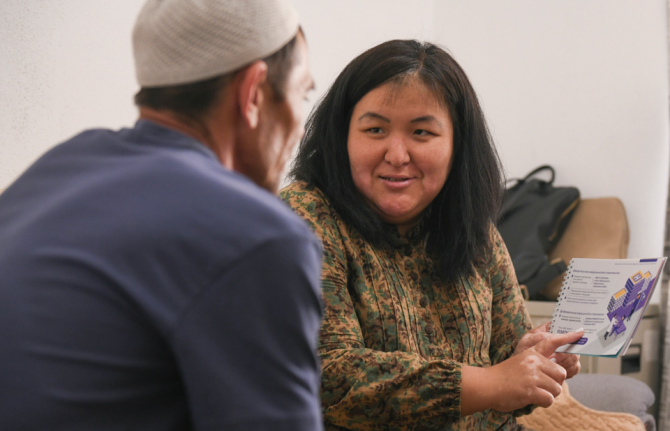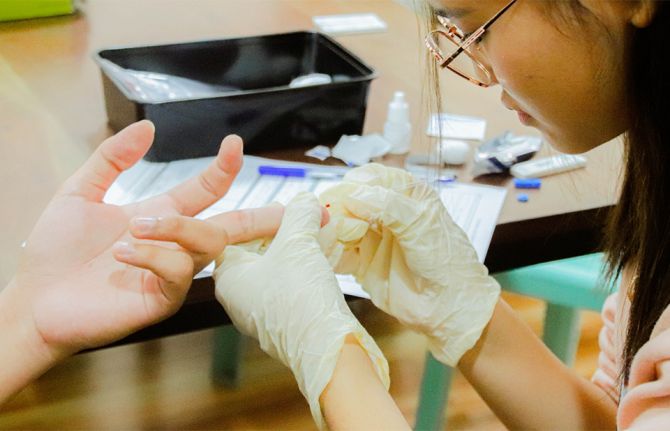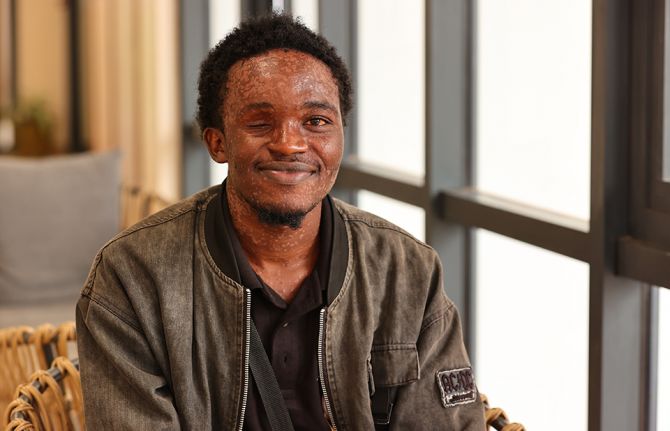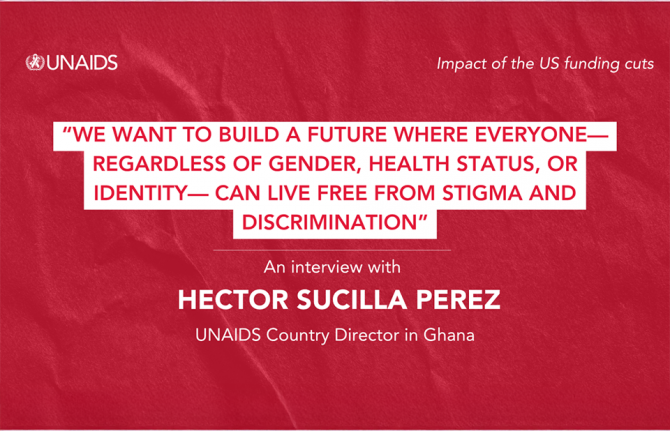

Feature Story
Community-led HIV services under threat: global networks and UNAIDS track the impacts of the US funding cuts
13 May 2025
13 May 2025 13 May 2025Community-led organizations are the backbone of the HIV response in many countries, providing access to HIV services for key populations, advocating for human rights and monitoring the HIV response. However, data collected by community-led organizations shows mass shut-downs of life-saving, peer-led services, significant – or total – budget cuts, staff lay-offs and rising levels of stigma, discrimination and mortality rates.
Two new key population-led reports, one by Global Black Gay Men Connect (GBGMC) and another by the International Network of People Who Use Drugs (INPUD), document the consequences of the US President’s Executive Order in January 2025 which froze all US foreign assistance. These reports highlight how services led by and for key populations are facing deep uncertainty about their future due to the funding cuts and loss of staff.
In its Frozen Out report, GBGMC found that 36% of partners supported by the US President’s Emergency Plan for AIDS Relief (PEPFAR) shut down within one week of the Executive Order. Another 19% said they could not operate beyond one month without renewed support. Similarly, INPUD’s report The Human Cost of Policy Shifts describes significant disruptions across harm reduction programmes. Nearly half (45%) of the organizations surveyed reported major budget losses, and one in four lost between 75% and 100% of their harm reduction programming. Critical services including peer-led outreach, HIV and hepatitis C testing, opioid agonist therapy, and overdose prevention have been disrupted.
A cascading crisis
The GBGMC report states that nearly 93% of key population-serving partners in Kenya reported experiencing full or partial service shutdowns. In Nigeria, every PEPFAR implementing partner providing services to key populations was reportedly affected. Across Kenya, Uganda and Nigeria, an estimated 2.2 million people have lost access to key population-focused HIV prevention services.
The report also warns that even short-term interruptions can have life-threatening consequences. Each day, an estimated 200,000 people rely on receiving their HIV treatment through US government-funded sites. Interruptions risk treatment failure, HIV transmission and the emergence of resistance to HIV medicines. Prevention efforts are also at risk, with US government funding supporting nearly 90% of global pre-exposure prophylactic (PrEP) initiatives.
“The PEPFAR funding freeze has led to the closure of numerous organizations and the disruption of essential HIV prevention services, leaving millions at risk. Immediate action is imperative to restore funding and protect key populations from further harm,” says Micheal Ighodaro, Executive Director of GBGMC
Impacts on organizations led by people who use drugs
INPUD’s report, The Human Cost of Policy Shifts, provides a detailed picture of how harm reduction services have been devastated by the US funding cuts. Based on a global rapid assessment of 101 respondents, the report reveals that nearly half lost between 26% and 100% of their harm reduction budgets, and 23% lost more than three-quarters of their funding.
The most disrupted services included peer-led outreach (41%), legal and human rights support (36%), HIV testing (35%), services for women who use drugs (33%), and overdose prevention (25%). The consequences for individuals and communities have been severe. 47% of organizations reported that people are now going without harm reduction supplies such as sterile syringes and naloxone, and 46% said people are relying on underground or informal networks for access. 30% observed increases in overdose deaths. Additionally, 62% of organizations documented rising stigma and discrimination against people who use drugs.
The report also highlights a particularly stark impact on women who use drugs. Of the 54 organizations that previously offered tailored services for women, 68% halted outreach, and over a third had to reduce or close services altogether.
“While increasing overall funding is important, it is equally vital to ensure that organizations led by people who use drugs receive targeted support to run harm reduction services that effectively address their communities’ unique challenges and needs," says Anton Basenko, Executive Director of INPUD
Heightened stigma and structural risks
Even before the funding cuts, key populations faced legal and social barriers
including criminalization, discrimination, and denial of services. According to reports gathered through UNAIDS’ dialogues with global and regional networks, these challenges are now intensifying. Community organizations have documented a rise in harassment, hate speech and healthcare discrimination. In some countries, specialized clinics are being “mainstreamed” into general health systems without adequate training or protections ensuring safe access.
UNAIDS’ response and coordinated action
Since February 2025, UNAIDS has been convening biweekly virtual dialogues with global key population networks, civil society advocates and international partners to share updates, raise concerns, and coordinate efforts to protect HIV services. At the regional level, UNAIDS is also convening with networks and joining forces to document the impact of funding disruptions and shape collective responses. These engagements have informed UNAIDS’ advocacy and programming supporting the launch of tools like the Rapid Action Financing Tool, strengthening country-level tracking through the UNAIDS impact portal (launched in early 2025) and amplifying community voices at global forums such as the UN’s Commission on the Status of Women and the Human Rights Council. Through continued collaboration with country teams, regional networks, and civil society, UNAIDS remains committed to co-creating solutions and prioritizing community-led responses.
A call for urgent action
GBGMC and INPUD urge governments, donors, and development partners to take immediate steps to:
- Restore and increase funding for community-led and key population-focused services and establish dedicated funding streams for key population-led organizations
- Establish pooled emergency funding mechanisms to sustain prevention and harm reduction
- Ensure meaningful community engagement in funding, service design, and legal reform
- Protect peer-led HIV services, which are grounded in principles of dignity, safety, and equitable access



